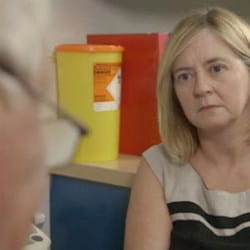
When was the last time you listened in to reception on a busy morning?
Patient experience is becoming one of the most important criteria in measuring a practice’s performance, with frontline communication being a key aspect of this. Busy receptionists who are inevitably handling large numbers of appointment requests will often respond negatively, and may sound something like:
"I’m sorry; I can’t give you an appointment for Dr Brown this week..."
"I’m sorry; Dr Brown is on holiday for a couple of weeks. I can’t book an appointment that far in advance and so you will need to phone back next week to make an appointment for when he is back."
"We don’t have any more appointments available today."
If such responses are commonly used by your receptionists, then you are probably not alone. But there is a growing evidence base to suggest that these are not the most effective responses for achieving high levels of patient satisfaction.
Changing responses
It can be argued that patients who feel satisfied with their practice encounters are less likely to complain about minor issues. From my experience of working with practices, it becomes clear that if you can re-script common ‘no’ responses (like the ones illustrated above) into ‘yes’ responses, the patient is left feeling more satisfied – even in situations where they do not get what they want.
Don’t worry though
Clearly you cannot create routine appointments for Dr Brown where there are none available – particularly when this might involve cancelling his well-deserved holiday! Though, hopefully all practices will be able to provide an emergency appointment for a patient who is urgently in need.
Scripting for a positive response
“So how do we script a negative to be a positive?” I hear you ask.
Saying “I’m sorry” is an important feature of a good response when you do actually get things wrong but it’s important not to overuse it. Dropping this phrase routinely into every patient encounter where the patient does not get what they want becomes insincere.
Alongside ‘sorry’, ‘can’t’ and ‘don’t’ are examples of other negative ways to start any response. Imagine yourself as the patient... I bet you can feel their frustration at hearing those words.
Try these alternative responses:
“I can give you an appointment tomorrow morning”
- where a patient has asked for an appointment that day. More often than not, the patient will be satisfied with this as it’s still a pretty good service (if you can manage it...) and it allows for further exploration of needs if the patient feels their symptoms cannot wait.
or:
“I can give you an appointment with Dr Jones tomorrow, or if you would really like to wait for Dr Brown I can give you an appointment for...”
- where a patient has asked specifically to see Dr Brown.
In our experience at MDDUS, practices who review and re-script their frequently experienced ‘no’ responses notice a change in patient response very quickly. I’m not saying that it is easy – it’s hard to re-programme your own natural responses – particularly where receptionists do struggle to accommodate many patient requests for appointments. And yes, in addition, a small percentage of your patients will be ‘immune’ to your team’s efforts to provide helpful, positively-worded responses to their enquiries.
A challenge
My challenge is for you to give this re-scripting a try because it might just improve patient satisfaction with reception. It should also have the pleasant side-effect of reducing hostile reactions from patients, thereby taking some strain off the reception team.
I would be interested in hearing from practices who have tried this type of technique within their reception team. In particular, I would encourage comments from any GPs or practice managers who would be willing to share positive experiences and suggestions for others, who are trying to improve frontline communication.
This page was correct at the time of publication. Any guidance is intended as general guidance for members only. If you are a member and need specific advice relating to your own circumstances, please contact one of our advisers.
Save this article
Save this article to a list of favourite articles which members can access in their account.
Save to library


